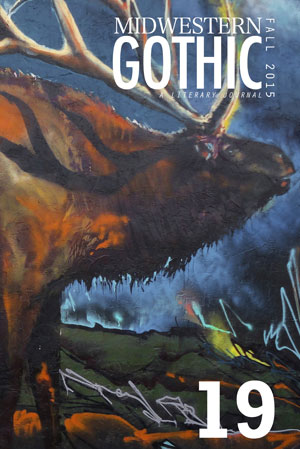May your trails be crooked, winding, lonesome, dangerous, leading to the most amazing view. May your mountains rise into and above the clouds. –Edward Abbey
I didn’t enjoy the Adirondak Mountains, but I definitely want to visit again.
Why? The rain, the cold, the clouds, and my new hammock put a damper on what I’m sure is a gorgeous setting.
Roaring Brook Falls
I arrived at Roaring Brook Falls campsite late in the evening after a long drive from Toronto. I actually loved this place quite a bit. It’s a short, quarter- to half-mile walk through the woods ending at the base of a 150-foot waterfall. First timers, the map is a little misleading – you have to cross the rushing creek and duck through a narrow path before the undergrowth gives way to a shadowed campground.

The creek encircles the whole camp after tumbling down the falls. The sound of rushing water provided a relaxing background soundtrack while I threw up my new hammock tent, and chatted with a family from Montreal about their vacation and the coming rain. I hoped they’d stick around even if the weather turned south – I don’t like sleeping alone in the wilderness if I can help it.
Unfortunately, my first night in the Hennessey Expedition Hammock didn’t go that well. I’ve got a friend who swears by them, but I’d forgotten the downside –how there’s no ground to keep you warm. It wasn’t freezing, but it got down to 40 degrees at night and I definitely felt the cold seeping in, even though I was in a sleeping bag rated down to 32 degrees and I had all my layers on. I couldn’t get comfortable, and probably got under four hours of sleep.

Giant Mountain
Even so, I wasn’t feeling the lack of sleep the next day, because I was going to be hiking up a mountain! Like a kid heading off to his first day of school, I was pumped up to tackle Giant Mountain, a great warm-up before trying Mt. Marcy the next day.

Every website listed Giant Mountain as an “easy” hike. Three miles and a couple K in elevation change sounded doable. I even walked the 1.5 miles from Roaring Brook to the trailhead at Chapel Pond along the road.
Easy. What a bunch of crap.
Imagine climbing steep, uneven, rock stairs for three miles straight. Then pour water over most of them. That’s the hike up Giant Mountain. I’m not usually a complainer, but this “easy, family hike” was anything but. The only real flat portion of this trail is under a mile in when you reach the Giant Washbowl.

Giant Washbowl is a solitary pond tucked just on the other side of the first ridge you climb. The water reminded me of something out of a horror flick or a fantasy novel –inky black and bone-white trees line the edges. The trail crosses the pond on driftwood beams that creak and groan underfoot. Truly a surreal place to be.
Luckily, I met fellow hikers to commiserate with on the way up. Honestly, that’s one of my favorite parts of hiking – the “trail friends.” You’re alone enough in the wilderness. When you’ve been walking with nothing but the wind in the trees and rustling animals, you can’t help but say hello to another human being.
There’s a functional benefit to trail friends: safety in numbers, sharing water and food, coaching up to the summit. But we also help each other validate why we’re crazy enough to strap forty pounds to our back and walk up a mountain for no real purpose other than to say we did it. We find people just like ourselves out on the trail, something we can’t do in the hustle and bustle of the city.
Even with the challenge, it never ceases to amaze me how quickly nature can call out to something inside you. Usually it’s some folly: a mountain lake nestled among the cliffs, or a small rippling meadow hemmed on all sides by trees. It’s those moments that I live for out on the trail. Giant Mountain has several of those on route to the summit. When you emerge from the trees, you are treated to some wonderful views of the surrounding mountains and a crisp breeze.
A small piece of advice – take the detour around Giant’s Nubble, which is about 2 miles into the trail. You’re climbing enough, no need to go back up and come back down needlessly to save what’s only a hundred or so feet in actual distance.
I’ve yet to reach a mountain summit that wasn’t satisfying, but I almost gave up on Giant Mountain. Not from exertion, but because I was worried about making it back down in time. The hike was taking much longer than I thought it would.
Still, I made it, and the view was gorgeous. The summit looks out over a massive “scoop” out of the landscape. It’s 1-2 thousand feet down to the forest and the “arms” of Giant Mountain reach out in a gentle semicircle that frames up the view. Amazing.

People might call me crazy, but going down on a hike is worse than going up. Especially on this trail, since it’s so rocky, uneven, and treacherous. At one point, the path seemed to vanish over a cliff face. The rangers had spray painted an arrow to direct you towards the left side of this cliff face, where the slope was actually traversable if you got down and scooted down the trail.
I thought I’d sleep great that night, but the chill and downpours kept me awake for another sub-4 hour night.
Lake Placid
The rain the family from Montreal warned me about had come. There was no wind, no thunder and lightning, but there was rain. More than 24 hours of it, with only a couple hours of letup. It started late at night and continued until I left the next morning. I had rain gear, but the idea of hiking 15 miles in a downpour did not sound appealing, especially given how badly Giant Mountain kicked my out-of-shape behind the day before. So I scrapped Mt. Marcy and decided to visit Lake Placid instead.
Leaving the campsite was a little scary – the water had swollen the creek to a small rushing river. Not quite as bad as McCandless experienced in Into the Wild, but there was nowhere traversable, even after walking the whole river bank. At this campsite, you’re essentially landlocked – the mountain backs up against the bend in the river, so there’s really no way out other than to cross it.
I had to pick the least of all evils and just jump with fifty pounds of gear on my back and know that I was going to land in calf-deep water.
Lake Placid was the site of multiple Olympic Games, and a lot of the infrastructure is still there. I gave myself a tour of the ski jumps, the torch, medal stand, and some of the training facilities. Luckily, the rain let up for a couple hours, allowing me to get out of my car and get a closer look at things.
To get to the ski jumps, all posted signs tell you to use the lifts to get to the top, but things were closed when I arrived on a Sunday. Rules. pshaw! I drove up to John Brown Farm and discovered a back entrance to the jumps!

Go past Ski Jump Lane, and pull into the first parking area on your left, before you get to the actual farm. There’s a trail that heads off to the left – follow it and it will circle up to the maintenance parking lot by the jumps. From there, you can walk right in and explore the grounds. If you want to go up to the top of the jumps, you won’t be able to, the only place to buy those tickets is down at the bottom.

After seeing the ski jumps and the medal stands, I headed down to find the Olympic Torch. As a track athlete in High School, I always loved watching the Olympics and seeing all the sports that only get airtime every four years. I had high hopes, but it’s a little underwhelming – the torch sits among a track, softball field, and other high-school sized sports fields. Several pickup trucks were parked next to the symbol of the pinnacle of human achievement tucked behind where 6-year-olds play soccer like some dusty bowling trophy, and it all felt very anti-climactic.

So I left the Adirondaks quite a bit disappointed, but wanting to come back and give them another chance.





















